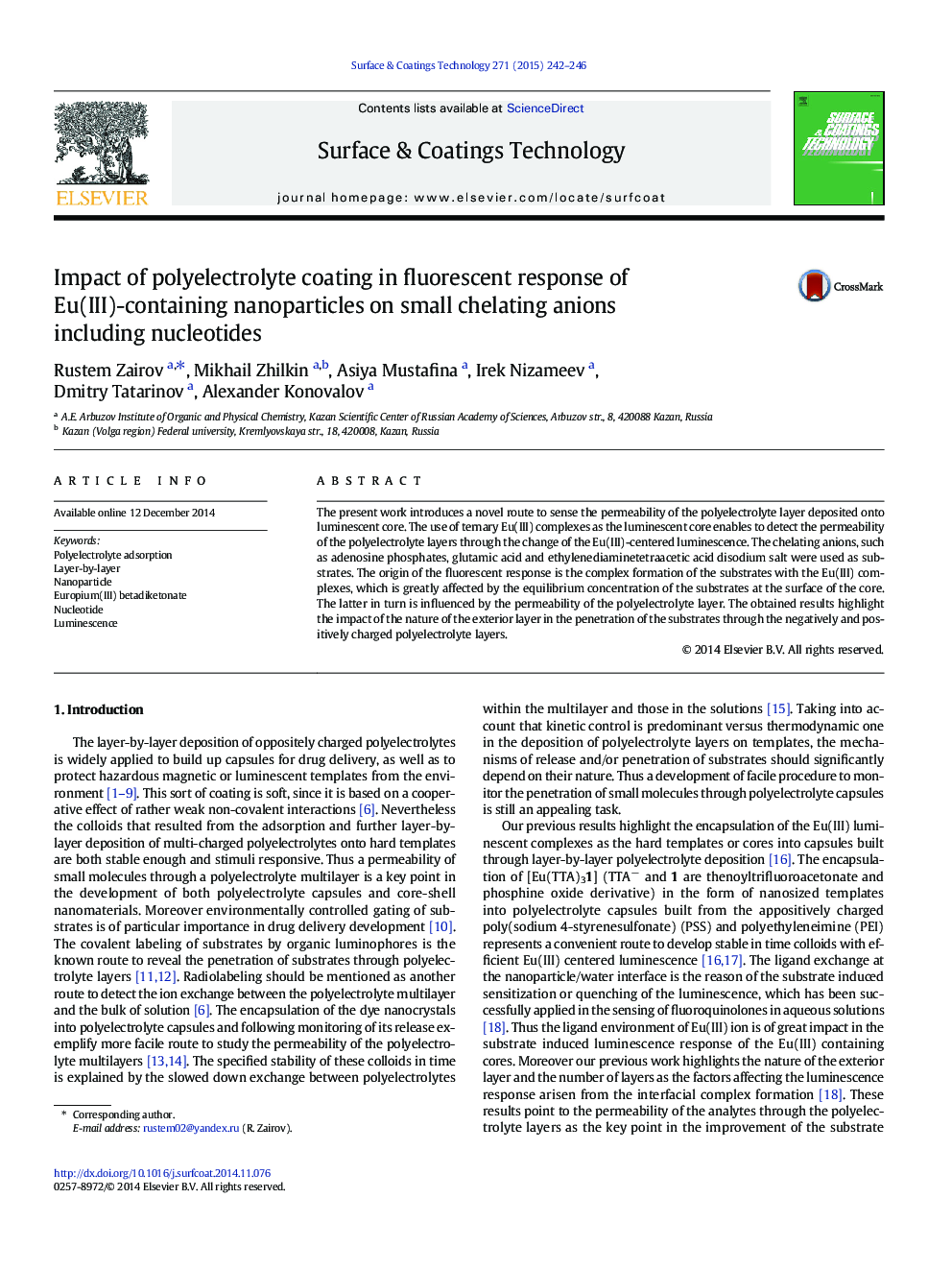| Article ID | Journal | Published Year | Pages | File Type |
|---|---|---|---|---|
| 1656910 | Surface and Coatings Technology | 2015 | 5 Pages |
•Polyelectrolyte coating of luminescent nanoparticles based on Eu(III) complex.•Luminescence of Eu(III)-based core is quenched by biophosphates.•Concentration dependent quenching is affected by the nature of polyelectrolyte.•Nature of coating affects penetration of biophosphates to Eu(III)-based core.•Permeability of coating can be sensed through quenching measurements.
The present work introduces a novel route to sense the permeability of the polyelectrolyte layer deposited onto luminescent core. The use of ternary Eu(III) complexes as the luminescent core enables to detect the permeability of the polyelectrolyte layers through the change of the Eu(III)-centered luminescence. The chelating anions, such as adenosine phosphates, glutamic acid and ethylenediaminetetraacetic acid disodium salt were used as substrates. The origin of the fluorescent response is the complex formation of the substrates with the Eu(III) complexes, which is greatly affected by the equilibrium concentration of the substrates at the surface of the core. The latter in turn is influenced by the permeability of the polyelectrolyte layer. The obtained results highlight the impact of the nature of the exterior layer in the penetration of the substrates through the negatively and positively charged polyelectrolyte layers.
Graphical abstractFigure optionsDownload full-size imageDownload high-quality image (87 K)Download as PowerPoint slide
